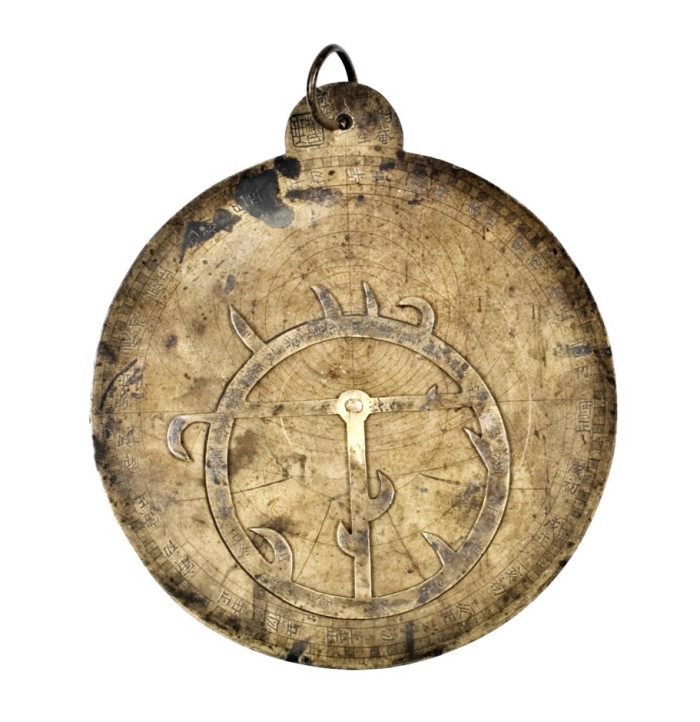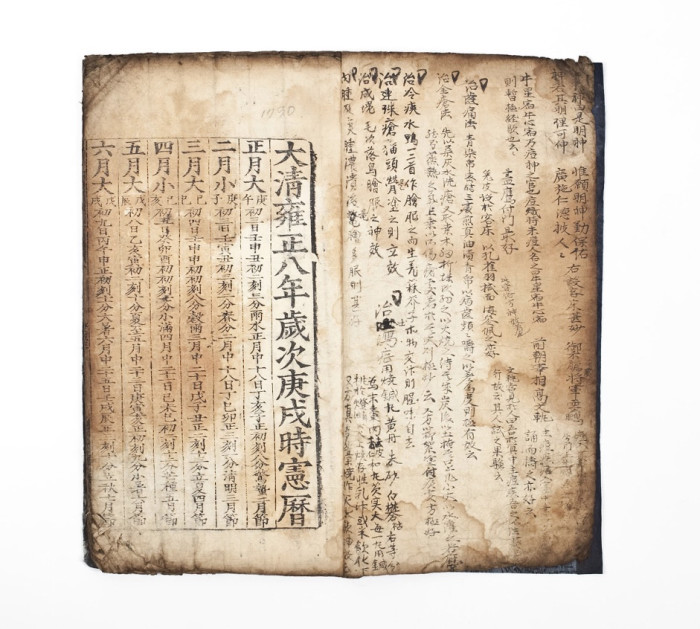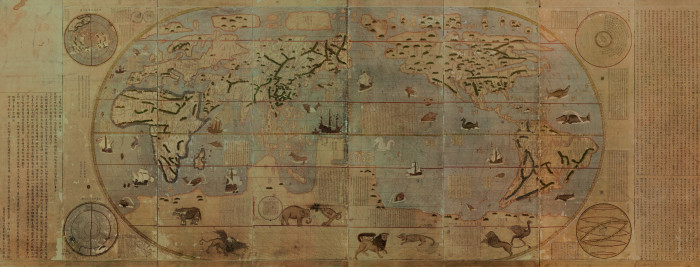지지씨
THE FORMATION AND DEVELOPMENT OF KOREAN SILHAK, ASTRONOMY AND GEOGRAPHY
3. Silhak and science (astronomy and geography)
With the introduction of advanced natural science from the West, Joseon’s astronomy and geography started developing markedly. The most important change in Joseon concerned people’s perception of basic elements of the universe: previously they had thought that time and space had a certain philosophical meaning, but now they knew that they were simply natural phenomena. The most important development in Korean astronomy was the start of the use of Siheolryeok, a luni-solar calendar made under the influence of western astronomy and the solar calendar in 1653.
The 24 divisions of the year were fixed in accordance with the solar calendar. Scholars now understood that the changes in the seasons occurred as a result of the relationship between the earth and the sun, rather than as a result of the circulation associated with Yin-Yang and the Five Elements, and started studying the round earth and heliocentric theories, etc. In geography, the way people looked at the world changed dramatically with the introduction of the Kunyu Wanguo Quantu (Chinese for Gonyeo manguk jeondo) map made by Matteo Ricci.
The Sino-centric worldview was rejected, while there was growing awareness of the intrinsic differences between different peoples and different nations. The maps of the country were drawn up based on real measurements with the adoption of Jeong Sang-gi’s 100 ri (=40km)-based reduced scale and the sectional paper-type map production method. As a result, Daedong Yeojido (Territorial Map of Korea), which was made by Gim Jeong-ho (? ~1864) in 1861 based on the map production methods developed up to that time, was a relatively accurate one.

Astrolabe
This portable astronomical instrument known as an astrolabe was used to locate the positions of the stars and to determine local time, latitude and longitude. It was made and used in many parts of the world in the past and in the medieval Islamic world in particular. This particular one was made by Ryu Geum (1741-1788), an expert in geometry and astronomy who also maintained friendly relations with Bukhak scholars including Bak Ji-won (1737-1805). There is a seal on the top of the front face bearing an inscription composed of three Chinese characters, "柳氏琴", along with a memo that it was "made in 1787 for Master Yun, or Yagam" [his courtesy name].
This is a portable astronomical device used to determine the positions of the stars, the time, and longitude/latitude. They were chiefly made in Arabia. This one was made by Yu Geum (1741-1788), a Silhak scholar who was well versed in geometry and astronomy, and worked together with others including Bak Ji-won who held the view that Joseon should rehabilitate her culture by accommodating more advanced cultures from China and western countries.

Pyeonghonui`(Astronomical Observation Instrument)
Astronomical devices made in Joseon under the influence of western science include the ganpyeongeui, pyeonghoneui, (Equatorial Mounting), and various astronomical maps. The pyeonghoneui (Celestial Globe) made by Bak Gyu-su (1807-1877) marks the constellations of the southern and northern hemispheres on a plane circle. The locations of the constellations tell about the time and the seasons.

Siheollyeok (Almanac)
The Siheon (or Shixian) Calendar is a lunisolar calendar developed in Qing on the basis of the Western calendar system. Unlike the older calendar in which the twenty-four solar terms are evenly arranged according to the method of "balancing energy" with the Winter Solstice as the starting point, this newer calendar uses the method of "fixing energy," whereby the Yellow Path is divided into 24 equal segments of 15 degrees. This new method was introduced to Joseon in 1646 by Gim Yuk (1580-1658), resulting in the use of a new calendar in 1653. This particular item was made by the Directorate of Astronomy in 1730.
The country had used the Chinese lunisolar calendar, which is based on the fact that it takes the Moon about one month to go through all its phases, and that the four seasons repeat themselves every year. This calendar has undergone frequent changes as a result of changes in the dynasty and under external influences. It was replaced by Siheolryeok under the influence of the solar calendar, which was introduced in the early 17th century.
Siheolryeok was made based on Chongzhen lishu (Chongzhen Treatise on Calendrical Astronomy) compiled by Jesuit missionaries such as Adam Shall (1591-1666) and Chinese government officials including Xu Guangqi (1562~1633) toward the end of the Ming Dynasty. It is a calendar that makes it possible to calculate the 24 divisions of the year and the times of solar and lunar eclipses.
Siheolryeok was adopted in China in 1645 during the transition from Ming to Qing, followed by Joseon in 1653. When Gim Yuk was dispatched to Beijing as a royal envoy in 1646, he instructed one of his attendants to learn about the calendar.
Siheolryeok was a new calendric system made with the aid of new astronomical devices and techniques, including theories about the universe based on the round earth theory adopted in western countries, the theory of planetary motion proposed by Ptolemy, Copernicus, and Brahe, western geometry including spherical trigonometry, celestial measuring devices (like sanghaneui, gihaneui, hosiequi) and telescopes.

New Gonyeo-manguk-cheondo(New Matteo Ricci’s World Map)
This is a new version of Gonyeo manguk jeondo (Map of the Myriad Countries of the World by Mateo Ricci) made by the Silhak Museum based on the prototype, a world map commissioned by the royal family of the Joseon Dynasty in 1708. In 1602, Matteo Ricci, an Italian Jesuit priest, jointly with Li Zhizao, a Chinese scholar, made Kunyu Wanguo Quantu (Chinese for Gonyeo manguk jeondo) in Beijing. The map was introduced to Joseon in 1603. In 1708 (the 34th year of King Sukjong’s reign), two hand-copied reproductions of it were made in Joseon at the command of King Sukjong, one of which is kept at the Seoul National University (SNU) Museum (Treasure No. 849), while the other was consumed in a fire at Bongseonsa Temple during the Korean War. The Kyujanggak Institute for Korean Studies, SNU managed to digitally reproduce the map that used to be kept at Bongseonsa Temple in the form of an eight-panel folding screen using photos as a reference material. In 2011, the Silhak Museum redid the work of restoring it based on the one made by SNU. The illegible letters were restored based on a copy (1602 edition) of Kunyu Wanguo Quantu kept at Kyoto University in Japan and the University of Minnesota in the United States. For the coloring, the workers referred to the one kept at the SNU Museum. The second to seventh panels are a world map. The first panel contains a foreword written by Matteo Ricci while the last panel contains a foreword written by Prime Minister and Head of Gwansanggam (Bureau of Astronomy) Choe Seok-jeong.
Traditionally, geography had been regarded as an important subject from the political, military and everyday perspectives in Joseon. Maps were drawn up early in the country’s history, but they had limitations due to political and ethical factors, and cartographic techniques did not develop noticeably. All this changed, however, with the introduction of western maps and natural science in the early 17th century and thereafter.
In 1602, Matteo Ricci, an Italian Jesuit priest, jointly with Li Zhizao, a Chinese scholar, made Kunyu Wanguo Quantu (Chinese for Gonyeo manguk jeondo) in Beijing. The map was introduced to Joseon as early as 1603, and two hand-copied prints were made of it in Joseon at request of King Sukjong in 1708. The map currently kept at the Silhak Museum is a restored copy made in 2011 based on photos of the one that was destroyed along with Bongseonsa Temple in Namyangju during the Korean War.
The second to seventh panels are a world map. The first panel contains the foreword written by Matteo Ricci, and the last panel the foreword written by Prime Minister Choe Seok-jeong.
<ggc의 모든 콘텐츠는 저작권법의 보호를 받습니다.>
- 글쓴이
- 지지씨
- 자기소개